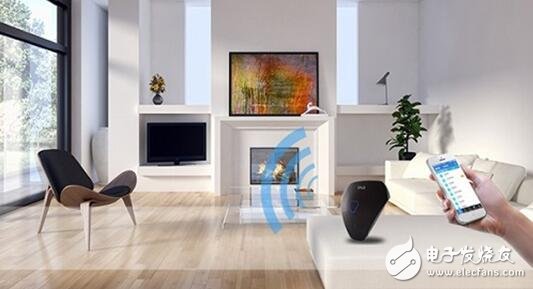Smart home needs big data
Smart home is the entry point for multi-field integration, the support point of social family management, and the new bright spot of people's livelihood service. In the era of big data, data is for smart home hardware and software services. Smart home companies should not only do hardware creation and software development, but also explore the big data value behind smart homes.
Data represents the market trend. Through data, manufacturers can better understand users, optimize product strategies and market strategies, and analyze users, create user portraits, provide personalized intelligent experiences for different users, and provide personalized users. Concessions, increase secondary sales; can also do analysis of home equipment activity status, analysis of failure rate, to guide how to iterate after the product, how to upgrade, including understanding user preferences, to focus on targeted marketing.

Four areas of data and services:
1. Big data collection and research
Through the big data collection of smart homes, cooperate with the corresponding government and scientific research institutions.
2. Cross-sector value-added services
Through the data collected by smart homes, data analysis of users' health, diet, shopping, learning and other information is carried out to tap user needs. At the same time, with the corresponding cross-industry enterprises such as regular distribution, home care, learning and education services.
3, personalized customization
The corresponding user data is collected according to the smart home, and then data integration is performed on the supply side and the production side. According to different factors, such as geography, temperature, user habits, family structure and other factors, the user is personalized product customization.
4. User and market accurate segmentation of user data collected by smart homes can help companies to accurately segment users. The precise delivery of advertisements can also have a very significant effect.
Smart home data storage and analysis
Big data is divided into big data storage and big data analysis. It belongs to two distinct computer technology fields, and big data storage is used for big data analysis. Big data storage focuses on developing data storage platforms that can scale to PB and even EB levels; big data analytics focus on processing large numbers of different types of data sets in the shortest amount of time. Whether it is big data storage or big data analytics, it has become a key application to help business owners. In the smart home field, such as cloud storage of home digital webcam, cloud streaming behind audio and video equipment, cloud monitoring of household power, etc., all use cloud storage and analysis technology on a large scale.
The data generated by the smart home system has a wide range of data, including the data of the hardware sensor, the data running status of the hardware itself, the data of the user and the hardware interaction, and the data generated by the user through the client such as the APP. The user's own usage habits and data of life scenes, etc., which leads to the accumulation of data and the amount of data generated by the overall smart home. The traditional storage technology cannot be satisfied, and a distributed large-scale cloud storage architecture is needed. To meet the needs of rapid development and innovation in the future, the gradual development and application of cloud storage technology has also attracted wide attention for the development of smart home.
The smart home big data cloud storage system mainly consists of logic control module, user access module, storage module, file read/write module and big data cloud storage module for smart home.
Logic Control Module: It is the core of the entire smart home big data cloud storage system. It is the hub of logical processing. Each service request is processed in this module.
User access module: It is the link between the user in the smart home and the cloud storage system. This module can transparently provide users with the functions of the underlying implementation.
Storage Module: Provides transparent access to a new generation of smart home cloud storage systems. The file read/write module is primarily responsible for isolating the upper logical processing from the underlying storage.
Logical structure: After the request is processed, it is transmitted to the storage module, and then sent by the storage module to the big data cloud storage module for the smart home, and the big data cloud storage is realized in the module.
Every data has an ETL, which is extracting, transforming, and then loading, including cleaning the data. If the data comes in large quantities, some data may be problematic. In the early stage of big data analysis, do a good job of data cleanup and standardization, so that the latter data analysis is much more convenient.

Distributed computing of big data:
The storage in the distributed computing platform commonly used in data analysis platforms is not the network attached storage (NAS) and storage area network (SAN) that we have faced in the past, but usually the built-in direct attached storage (NAS) and the distribution of the clusters. Computational nodes, whether it is data deployment security, protection and preservation processes are very complex. But big data analysis contains a variety of fast-growing technologies, and its definition is not accurate with simple distributed technology.
Audio Aux Cables,Type-C To 3.5Mm Audio Cable,3.5Mm Audio Adapter Cable,Type-C Audio Adapter Cable
ShenZhen Puchen Electronics Co., Ltd. , https://www.szpuchen.com